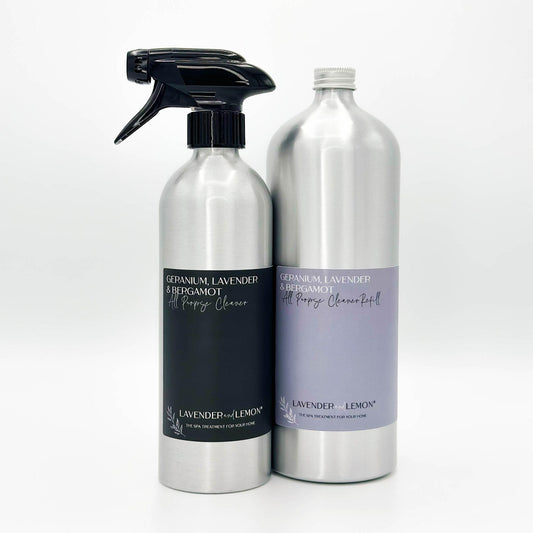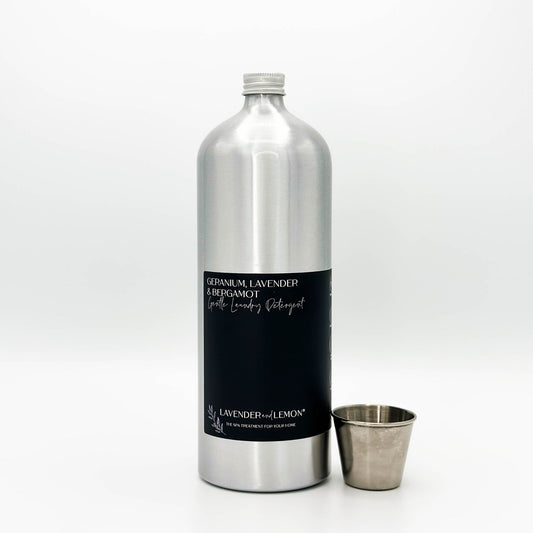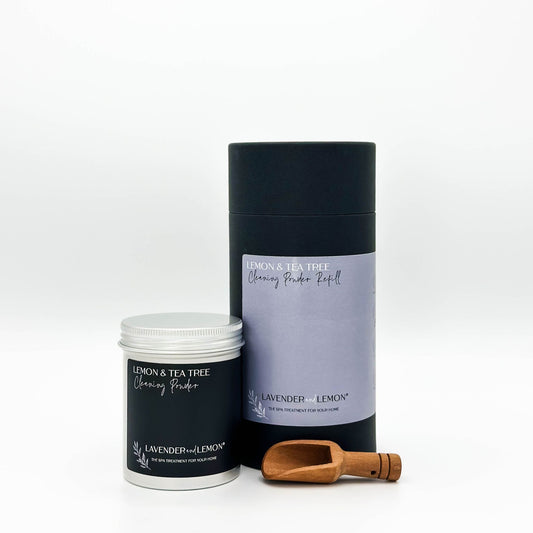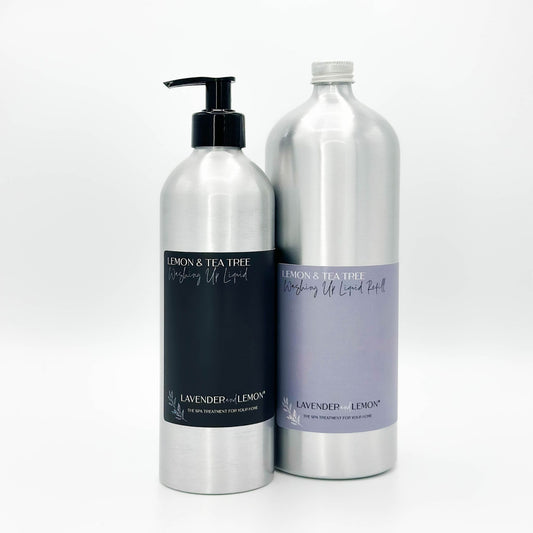Free Shipping Over £35
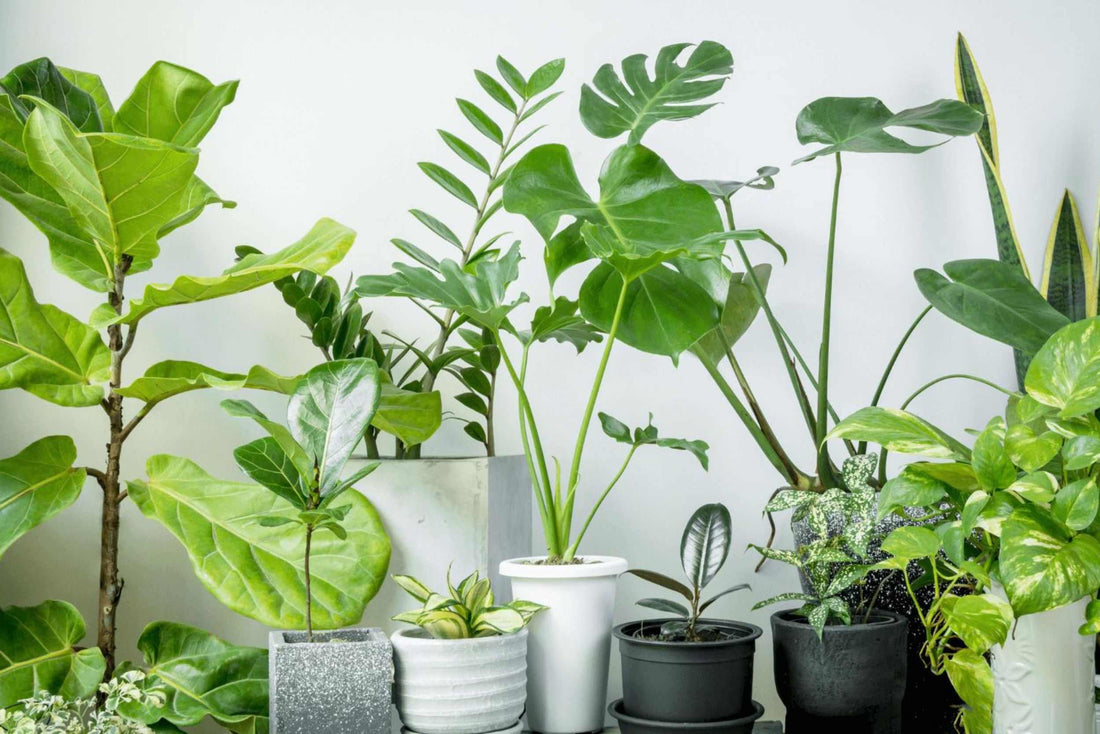
8 Simple Ways To Improve Indoor Air Quality
Share
Did you know that the average Brit spends 22 hours indoors, equating to around 90% of their day1!
On top of that, indoor air pollution in your home is 3.5 times worse than outdoor air pollution and, at its peak, can be up to 560 times higher, which means your home can quickly become a toxic pollution box consisting of trapped outdoor air pollution plus indoor air pollution2 from:
🚩cleaning products
🚩candles
🚩personal care products
🚩cosmetics
🚩fragrances
🚩furniture (MDF, particle board, plywood, glues, adhesives)
🚩rugs
🚩building materials
🚩textiles and more…!
The most abundant volatile organic compound (VOC) found indoors in the UK is n-butane, which is the main VOC used as an aerosol propellant (used, for example, in antiperspirant deodorants, cleaning sprays and room fragrances). Samples have shown that indoor concentrations of n-butane are 100 times higher than outdoor samples3. What’s more, there is evidence that home use (and indoor release) of these volatile chemicals is on an upwards trend4 .
Other toxic indoor air pollutants include benzene, formaldehyde, toluene, xylene, and ammonia5 . Spending time inside surrounded by these chemicals can trigger allergies and cause headaches, dizziness, eye irritation and much more6 .
Of course, you can’t stop breathing, so thankfully, there are steps you can take to improve the air quality in your home today.
1. Invest in houseplants to filter toxic chemicals
In 1989, a team at NASA conducted its 'Clean Air Study' to investigate the naturally filtering properties of plant life, which not only proved that living plants significantly reduce the amount of nasty VOCs from the air, it also catalogued which chemicals different plants removed — and to what extent.
2. Open Your Windows
I know British winters are freezing, but it’s still recommended that households should open their windows for at least half an hour a day to flush out harmful chemicals produced by cooking, cleaning and smoking – even if there is no smell - as household contaminants linger for much longer and in far greater quantities than had previously been thought6 . If you can’t open them for a half hour even just a couple of minutes a day will help.
3. Purify the air
Invest in an air purifier that can capture VOC’s and particles, including viruses and bacteria (ideally one in every room). This is the air purifier one that I personally have in my home and office.
4. Damp Dust as often as you can
Dust is not just dirt, dead skin cells, hair and pet dander. It is also comprised of chemicals that migrate out of products in our home and includes: flame retardants, fluorinated chemicals, phthalates, parabens, pesticides and heavy metals7 . Dust is now recognized as one of the most significant sources of childhood exposure to toxic substances because children spend a lot of time playing on the floor doing hand-to-mouth activities. When dusting, use a damp cloth to draw particles in and lift dust from the area rather than a dry cloth or feather duster, which simply moves dust around.
5. Vacuum with a HEPA filter
A HEPA filter is the best kind of filter you can buy for your vacuum. Scientists recommend using a HEPA filter to suck up toxic chemicals found in carpets, dust and pet dander. HEPA (High-Efficiency Particulate Air) vacuums differ from conventional vacuums in that they contain filters that are capable of trapping extremely small, micron-sized particles. I own and recommend this Miele HEPA Lifetime Filter vacuum which retains 99.999% of even the smallest fine dust and allergen particles.
6. Leave your shoes at the door
A 2008 study found that the average pair of shoes hosts up to 421,000 bacteria from nine different strains, and 96% of shoe soles contain faecal bacteria, including E-coli8 . 🤢 Once those bacteria make their way inside our homes, they can live for days. It’s a no-brainer, really…leave your shoes and the bacteria they carry at the door.
7. Ditch Synthetic Fragrances
Synthetic fragrances have become so commonplace that we often don’t even pause to think about whether they can affect our health. Most homes use a number of highly fragranced products, including air fresheners, scented plug-ins and scented candles, household cleaners, laundry products and personal care products. Nearly all of these products are made from petroleum-based chemicals and fragrance mixtures that consist of hundreds of unique ingredients, including known allergens and carcinogens. Most synthetic fragrances also contain phthalates, which act as a preservative and fixative for those scents. Phthalates are responsible for the long-lingering scent of your laundry detergent on your towels and clothing and are also responsible for long-term chronic health problems9 .
8. Choose Safer Cleaning Products
There is a lot of greenwashing in the cleaner industry by brands that market themselves as green and non-toxic but are not. The cleaning products we bring into our homes can contribute to poor indoor air quality and can expose our families and us to unnecessary chemicals that can contribute to chronic health issues10 .
One of the easiest ways to start reducing exposure to harmful chemicals in the home is by swapping out your conventional household cleaners for brands that use safer, healthier ingredients.
Remember: do what you can - progress is more important than perfection. When thinking about the air pollution in your home, it’s easy to panic and want to do EVERYTHING to remove toxic exposures. The truth is, it’s overwhelming and not practical because, in reality, we will never be able to avoid exposure to toxins fully. What’s really important is that you change what you can so you worry less about what you can’t.
[product=eco-friendly-all-purpose-cleaner]
✪ From Grease to Glass: Zero Residue, 100% Shine
✪ One Cleaner, Infinite Uses: Simplify Your Home
✪ Elevate Your Senses: Aromatherapy while you clean
[/product]
- National Centre for Atmospheric Science, British team to undertake four year air pollution study inside Bradford homes, 2022
- Clean Air Day, Clean Air Day Press Release, 2019
- Department for Environment, Food and Rural Affairs (DEFRA), Indoor Air Quality Final Report, pg. 25, 2022
- Department for Environment, Food and Rural Affairs (DEFRA), Indoor Air Quality Final Report, pg. 26, 2022
- Department for Environment, Food and Rural Affairs (DEFRA), Indoor Air Quality Final Report, pg. 23, 2022
- Jonathan P. D. Abbatt, The Royal Society of Chemistry, The atmospheric chemistry of indoor environments, 2019
- Mitro SD, Dodson RE, Singla V, Adamkiewicz G, Elmi AF, Tilly MK, Zota AR. Consumer Product Chemicals in Indoor Dust: A Quantitative Meta-analysis of U.S. Studies, PMCID: PMC5052660, 2016
- Cleaning Industry Research Institute, Study Reveals High Bacteria Levels on Footwear, 2008
- Wang Y, Qian H. Phthalates and Their Impacts on Human Health. Healthcare (Basel). 2021 May 18;9(5):603. doi: 10.3390/healthcare9050603. PMID: 34069956; PMCID: PMC8157593.
- American Lung Association, Indoor Air Pollutants and Health - Cleaning Supplies and Household Chemicals, 2022

